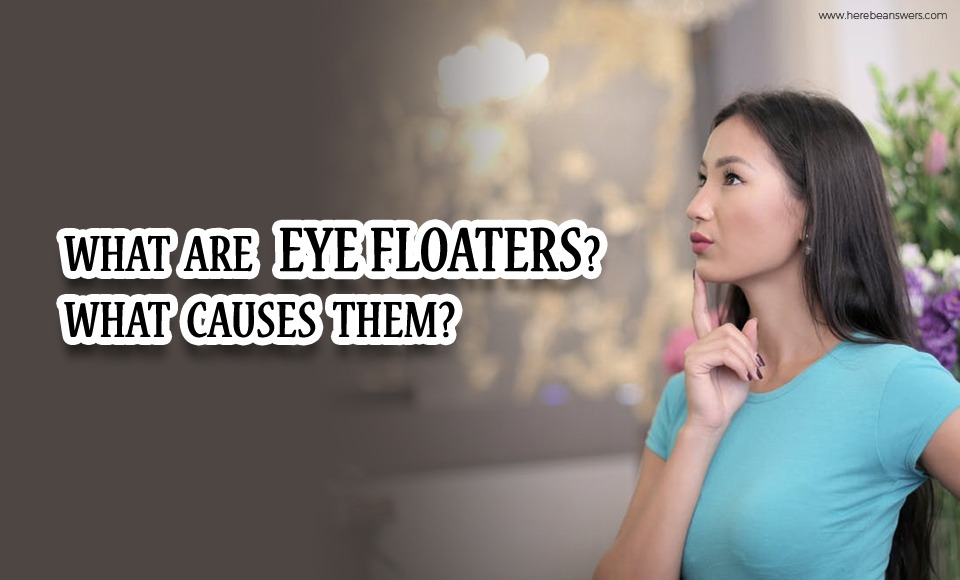While you are reading this, pause and try to look around, see a lot of things; you enjoy their colors and beauty. It is all because of your eyes.
Our eyes are the complex and the most highly developed sensory organs of our body. A far more significant part of the brain is dedicated to vision than hearing, touch, taste, or smell combined. Sometimes we tend to take eyesight for granted, yet when vision problems develop, most of us will do everything to restore it to normal. (click here for more details)
As you age, your eyes also experience usual, age-related problems. It includes cataracts, dry eyes, presbyopia, glaucoma, dry eyes, age-related macular degeneration, and temporal arteritis.
There is also another eye problem called eye floaters.
In the field of your sight, there are black, or grey spots or cobweblike strings drift about when you move your eyes and appear to dart away when you try to look at them directly. (click here for more details)
Eye floaters are a natural occurrence due to a clear, jelly-like substance that fills the middle of the eye or called vitreous that also helps give the eye its round shape. (click here for more details)
Floaters occur when the vitreous body of the eyes starts to shrink, then little fibers break away and become stringy. It is also called vitreous detachment, which causes fibrous masses of vitreous disrupt light coming into the retina. It casts a tiny shadow into the eye that makes floaters noticeable.
Everyone can acquire eye floaters at some point, but it is often ignored until it becomes worst. Eye floaters are common to people aging 60 and beyond. Also, people who had a cataract operation, have diabetes, or extreme nearsightedness most likely to develop floaters.
Are eye floaters permanent?
It is not that worrisome like other eye problems because most of them tend to settle down to the bottom of the eye, beneath the field of vision, but they can be very distracting and annoying at first.
However, the American Society of Retina Specialists suggests that when a person notices sudden symptoms such as floaters, it is recommended to get checkups with an ophthalmologist within the first few months after the symptoms appear, to check for any signs of more severe issues.
If eye floaters increase, and you also see light flashes or peripheral vision loss, immediately visit an eye specialist. Though painless, these symptoms are indications of a retinal tear that needs urgent medical attention.
Treatments
- Vitrectomy for Troublesome Floaters
Floaters are annoying, and no treatment is recommended. However, on cases where floaters appear in numerous amounts that significantly affect vision, a vitrectomy is needed.
A vitrectomy is a surgical procedure that removes the vitreous gel, and its floating debris, from the eye and substituted to a salt solution. There will no significant changes that you will not notice between the salt solution and the original vitreous because vitreous is mostly water.
Doctors generally reserve this procedure of severe circumstances because the surgery also carries significant risks to sight because of possible complications, including retinal detachment, retinal tears, and cataract. (click here for more details)
- Laser Vitreolysis for Troublesome Floaters
Aside from surgery, there are some alternatives for removing floaters, and one way is through vitreolysis. It is a laser treatment method that breaks apart or dissolves larger floaters, making them less noticeable. However, laser therapy is not for everyone.
A complete diagnosis from an ophthalmologist is needed to do in each case to see if the person could benefit from laser therapy.
The ‘3 O’s
In case you aren’t sure who to go for an eye problem, you need to know the different eye professionals.
Ophthalmologist. They specialize in eye surgery, typically focused on surgical cases and rare pathology treatment, and they go through years of schooling and training like any other surgeon.
Optometrist. They can treat eye diseases medically, prescribe spectacles or glasses, and perform various contact lens, low vision, and vision therapy services.
Optician. They have the most number among the three eye care professions. Their skills apply to any glasses or contact lens wearers. They are responsible for measuring and fitting frames and assuring quality control of the spectacles prescribed by optometrists and ophthalmologists.
Proper care of one’s eyes and the overall health may avoid those spots or cobweblike strings to occur in your eyes and annoy you or interrupt your daily activities.
While you are reading this, pause and try to look around, see a lot of things; you enjoy their colors and beauty. It is all because of your eyes.
Our eyes are the complex and the most highly developed sensory organs of our body. A far more significant part of the brain is dedicated to vision than hearing, touch, taste, or smell combined. Sometimes we tend to take eyesight for granted, yet when vision problems develop, most of us will do everything to restore it to normal.
As you age, your eyes also experience usual, age-related problems. It includes cataracts, dry eyes, presbyopia, glaucoma, dry eyes, age-related macular degeneration, and temporal arteritis.
There is also another eye problem called eye floaters.
In the field of your sight, there are black, or grey spots or cobweblike strings drift about when you move your eyes and appear to dart away when you try to look at them directly.
Eye floaters are a natural occurrence due to a clear, jelly-like substance that fills the middle of the eye or called vitreous that also helps give the eye its round shape. (click here for more details)
Floaters occur when the vitreous body of the eyes starts to shrink, then little fibers break away and become stringy. It is also called vitreous detachment, which causes fibrous masses of vitreous disrupt light coming into the retina. It casts a tiny shadow into the eye that makes floaters noticeable.
Everyone can acquire eye floaters at some point, but it is often ignored until it becomes worst. Eye floaters are common to people aging 60 and beyond. Also, people who had a cataract operation, have diabetes, or extreme nearsightedness most likely to develop floaters.
Are eye floaters permanent?
It is not that worrisome like other eye problems because most of them tend to settle down to the bottom of the eye, beneath the field of vision, but they can be very distracting and annoying at first.
However, the American Society of Retina Specialists suggests that when a person notices sudden symptoms such as floaters, it is recommended to get checkups with an ophthalmologist within the first few months after the symptoms appear, to check for any signs of more severe issues.
If eye floaters increase, and you also see light flashes or peripheral vision loss, immediately visit an eye specialist. Though painless, these symptoms are indications of a retinal tear that needs urgent medical attention.
Treatments
- Vitrectomy for Troublesome Floaters
Floaters are annoying, and no treatment is recommended. However, on cases where floaters appear in numerous amounts that significantly affect vision, a vitrectomy is needed.
A vitrectomy is a surgical procedure that removes the vitreous gel, and its floating debris, from the eye and substituted to a salt solution. There will no significant changes that you will not notice between the salt solution and the original vitreous because vitreous is mostly water.
Doctors generally reserve this procedure of severe circumstances because the surgery also carries significant risks to sight because of possible complications, including retinal detachment, retinal tears, and cataract.
- Laser Vitreolysis for Troublesome Floaters
Aside from surgery, there are some alternatives for removing floaters, and one way is through vitreolysis. It is a laser treatment method that breaks apart or dissolves larger floaters, making them less noticeable. However, laser therapy is not for everyone.
A complete diagnosis from an ophthalmologist is needed to do in each case to see if the person could benefit from laser therapy.
The ‘3 O’s
In case you aren’t sure who to go for an eye problem, you need to know the different eye professionals.
Ophthalmologist. They specialize in eye surgery, typically focused on surgical cases and rare pathology treatment, and they go through years of schooling and training like any other surgeon.
Optometrist. They can treat eye diseases medically, prescribe spectacles or glasses, and perform various contact lens, low vision, and vision therapy services.
Optician. They have the most number among the three eye care professions. Their skills apply to any glasses or contact lens wearers. They are responsible for measuring and fitting frames and assuring quality control of the spectacles prescribed by optometrists and ophthalmologists.
Proper care of one’s eyes and the overall health may avoid those spots or cobweblike strings to occur in your eyes and annoy you or interrupt your daily activities.

